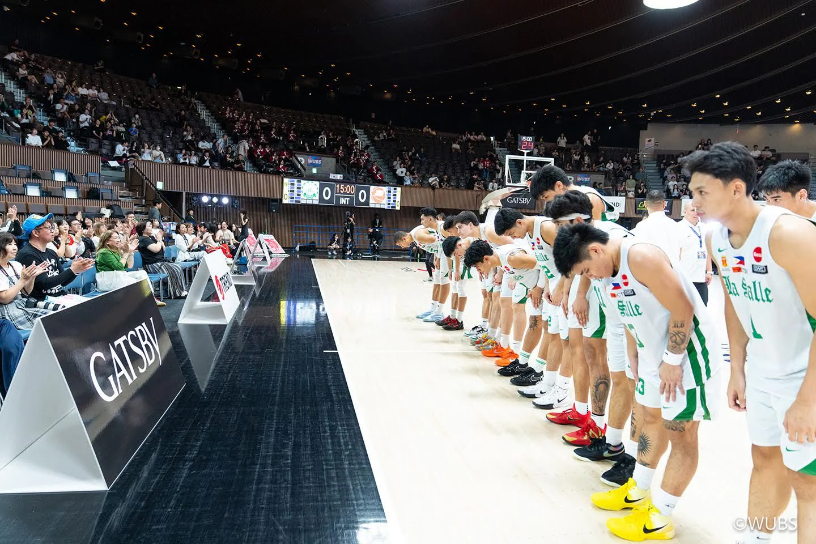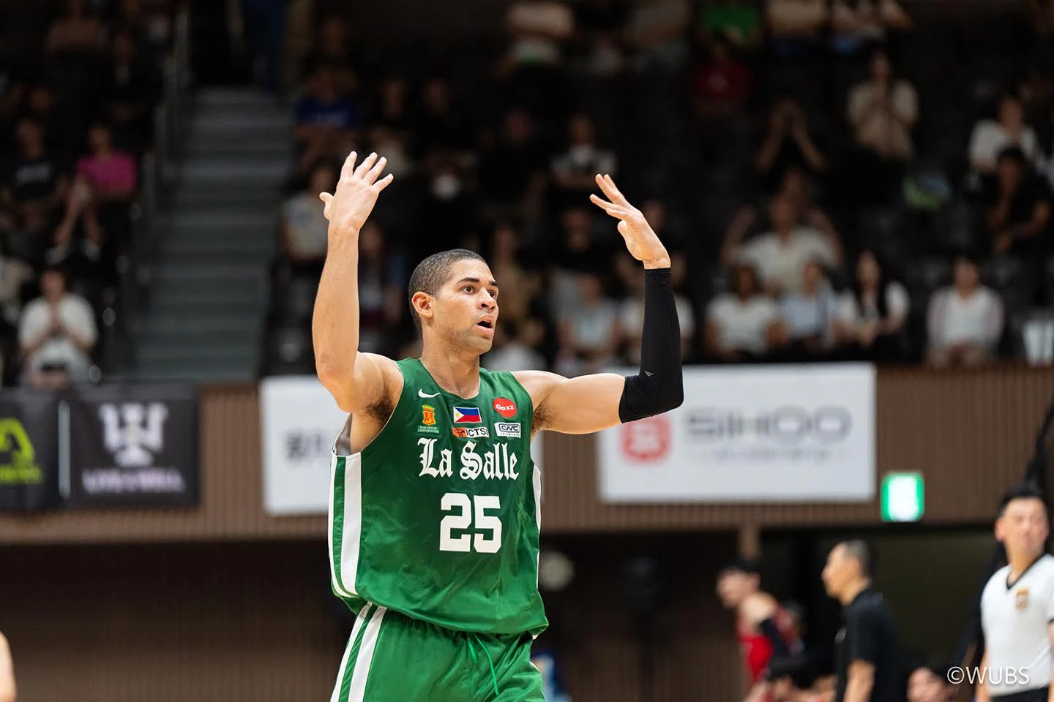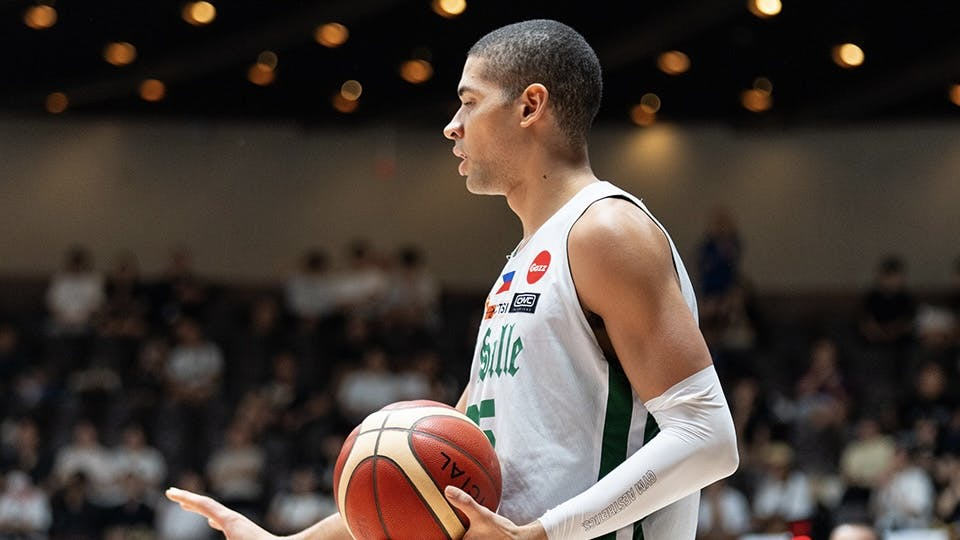5 Things We Learned From DLSU and UP’s Stint in the 2025 WUBS
The DLSU Green Archers and the UP Fighting Maroons played zero minutes against each other in the 2025 World University Basketball Series (WUBS). Make no mistake about it, though: The entire time they were in Shibuya, they were trying to one-up each other.
This not-so-friendly competition, which can be traced back to Season 82, got really serious two years ago when a Kevin Quiambao-led La Salle team overcame UP to win their first UAAP title in seven years. Then, in Season 87, the Fighting Maroons got back at DLSU to reclaim the championship in JD Cagulangan’s final playing year.
Most recently, the two programs clashed twice in the 2025 FilOil EcoOil Preseason Cup. La Salle took a wild shootout on May 31, only for UP to bounce back and knock them out in the semifinals.
Fans in Shibuya anticipated another high-stakes collision at the Yoyogi National Gymnasium. Instead, UP (0-2) stumbled early while DLSU (2-1) ran into a loaded Korea University squad in the finals. We’ll have to wait until October to see them go head-to-head again, but their WUBS showings still read like the latest entries in a running game of: Anything you do, I can do better—damn it.
So, who got the better of this latest exchange? More importantly, what did we learn about these two teams as they ramp up preparations for the upcoming UAAP season? Let’s have a look at some takeaways.

Tres Pa More
There’s no polite way to say it: in stretches of their WUBS campaign, UP played like hot garbage.
Against both Korea University and the University of Sydney, the Fighting Maroons displayed two ills that are unbecoming of collegiate champions: unnecessarily rushed shots and ill-timed threes. More often than not, UP’s rushed shots were ill-timed threes, which is a nice way to guarantee a dreadful finish in this tournament that ran for just three days. For three!
If anyone wants to give the Maroons a pass for that opening day loss to the eventual WUBS champions, go right ahead. But, for the life of me, I cannot explain why UP shot a mind-blowing 37 threes against the Australians on Day 2. The number of makes? Six. The number of two-point attempts? 46. In other words, nearly half of their field goal attempts in that game were from a distance that they repeatedly failed to master, but kept shooting from anyways.
I can’t tell if other UAAP teams were having a belly laugh or enthusiastically writing UP’s weakness in huge block letters on their whiteboards. Expect those ball clubs to find ways to exploit this weakness in Season 88.
The Archers’ Offense Was Humming
On the other hand, DLSU looked really good on the offensive end during their weekend games.

In their wins over National Chengchi University and Japan University Select Team, the Green Archers were impressive in terms of moving the ball and setting up high-quality scoring opportunities. At the forefront of this efficient offense were Jacob Cortez (five assists against the Japanese squad) and Kean Baclaan (four dimes against NCCU).
Don’t look now, but Mike Phillips is taking a page out of KQ’s playbook as he gets better at passing out of the post. Taking advantage of the intimidation that he presents on the low block, Motor Mike found his fellow big Luis Pablo and Mason Amos time and again on well-timed cuts.
Here’s another stat that illustrates the Archers’ fine-tuned offense during their first two games: only 10 turnovers on Saturday and one less than that on Sunday. All in all, La Salle shot 49.3% against NCCU and 44.6% versus Japan University. Now those are numbers pointing to another strong push to make the UAAP Finals in four months’ time.
Pasalubong sa Diliman
Now, this is not to say that there weren’t bright spots during UP’s stint in the WUBS. There were a couple of players who indicated that they’re coming out of their shells in Season 88.
Remember when coach Goldwyn Monteverde fielded the fearsome trio of Rey Remogat, Gerry Abadiano, and Harold Alarcon in the closing minutes of the Korea University game? Of course you don’t, because that never happened. With Alarcon logging a DNP and the other two sitting on the bench, Chicco Briones was out on the court, hitting two corner threes to tie the game at 65. UP ended up losing the game, but there’s no denying that those long-distance conversions gave Briones a jolt of confidence—an assurance that he can, in fact, come up big in the clutch.
Another Fighting Maroon who set himself up for success in Season 88 was Gani Stevens. See the way that this big man cleaned up the boards against long-limbed and burly competitors alike? Call this a stretch if you will, but there was something Pingris-like in Stevens’ body of work at the WUBS. In both games, the 6-foot-7 center led the Maroons in rebounds (12 in game 1, eight in game 2). If Francis Nnoruka fills the scoring void left by his namesake who’s now in Nagoya, Stevens looks to be Quentin Millora-Brown’s heir apparent as chairman of the boards.
(Oh, and did that dude in the no. 10 jersey just convince KBL and B.League scouts to prepare a big bag? Just saying.)
Mike Phillips: Transcendent

Though La Salle showcased impeccable form in their first two games, they ended up facing the buzzsaw that is Korea University in the finals. Cortez looked frustrated for the most part, Baclaan mustered short spurts of brilliance that couldn’t quite cut it, and Amos wasn’t able to get his shooting going.
And then, there was Motor Mike.
I’ve asked it before, and I’ll ask it again: Why isn’t this guy playing for some Lithuanian team whose name we can’t pronounce? Michael Christian Phillips, if we’re being frank, is way too good for the local collegiate scene. I could take out the word “collegiate” in that sentence and build a strong case for that too.
We can dissect his 30-point performance in the WUBS finals and see the various components that he’s developed in his game: creative finishes around the rim, improved ability to put the ball on the floor, and the aforementioned playmaking on the low post. But, if you had to pinpoint just one quality that makes Phillips a transcendent athlete, all you have to do is observe the way he secures possessions and stays in possessions.
Phillips doesn’t just get boatloads of rebounds by being a relentless, constantly moving pitbull like his head coach Topex Robinson circa the 2000s Red Bull era. Watch Motor Mike closely, and you’ll see that there are times when he just remains in the vicinity of the play. Even when it appears that his opponents have their hands on the rock, he hovers just inches away, ready to swipe at the ball, intercept passes at the most opportune time, and throw down another highlight dunk.
Can the SBP catch a break and secure local status for Phillips? I’d love to see him hedge and switch out on ball-handlers coming off screens in international play—something that some Pinoy big men can’t do to save their souls. (That’s an article for another day. Kanpai.)
Lesson Learned From Korea University
From a win-loss standpoint, DLSU one-upped UP as the Green Archers picked up two victories in the WUBS while the Maroons come home empty-handed. But, if we set aside the hostilities for a moment and let the Shibuya experience sink in, there’s an important lesson to be learned. And it came by way of the adversary that humbled both Filipino contingents.
How was Korea University able to build such commanding leads over DLSU and UP in the early goings of their respective duels? With transition threes, that’s how.
Traditional hoops wisdom would have us grasp our thinning hair and scream in protest whenever a player launches an outside shot during a fastbreak opportunity. “Ilapit mo!” we’d yell in unison. While a layup remains a logical option in a two-on-one situation on the open court, Korea University showed us in the 2025 WUBS that honing the skill of swishing transition threes can lead to positive outcomes.
Think about it: In transition, the other team’s defenders are scrambling to find bodies to cover and inevitably fortify the paint, leaving the perimeter wide open. Plus, the shot clock is in its early stages, which means that your team can potentially have more possessions in the quarter to dish out punishment on the offensive end. Oh, and this shot is worth three points, not just two.
The conventional way of thinking is that field goals at point-blank range make more sense because they’re easier shots. But, with basketball icons like Steph Curry redefining the sport’s fundamentals, who’s to say that outside shots can’t also become “easy” buckets with weeks, months, and years of rigorous practice?
Huwag na tayong lumayo. I think about KQ from La Salle’s recent past and Fortea on the UP side, along with Terrence’s old teammate CJ Cansino. These three are vastly different cagers, but they had a common weapon in their arsenal: the three-point edition of the stop-and-pop.
If the Fighting Maroons want to keep jacking up those transition threes, they better make sure that they’re putting in the hours in the gym to perfect that intricate skill. (Instead of, you know, going 6-for-37). If the Green Archers want their shooters to become even more unpredictable forces of havoc, they can replicate the onslaught wreaked by the likes of Kichan Yun (6-for-10 from outside) and Tournament MVP Moon Yu-Hyeon (3-for-6 from deep) in the WUBS final.
Will a transition three end up deciding the winner of a hard-fought final battle at the end of UAAP Season 88? No idea. But that would be one hell of a way to secure a collegiate championship in 2025.

